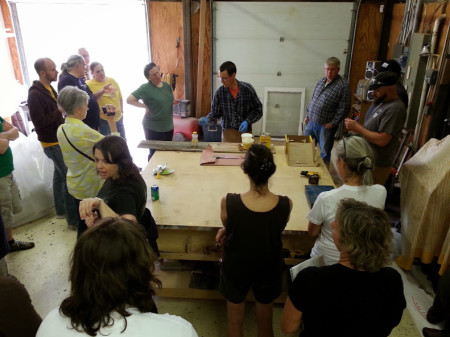Innovative products and ever-evolving “best practices” in construction demand an ongoing effort at continuing education. Indeed, new construction materials are developed every day (often with the intention of solving problems we didn’t even know we have). From both a design and a construction standpoint, it is important to stay on top of these new developments in design and construction – to evaluate, consider, test, and sometimes incorporate into our work.

A training on historic window restoration, hosted in part at the Silent Rivers shop, helped community members gain skills in repairing and maintaining their historic wood windows.
Continuing education takes many forms: manufacturer training, product demonstrations, classroom learning, certifications, and testing.
- Manufacturer Training – When a manufacturer or distributor releases a new product, the best contractors may be wary of leaping headlong into recommending and installing it. To reduce potential for product failure, manufacturers will often offer hands-on training sessions on product selection and proper installation procedures. These trainings also give field crews a chance to “test drive” a product so it can be properly evaluated for use on client jobs.
- Product Demonstration – Manufacturers often employ sales people to go out to designers and “show off” their products. This allows designers to get a good sense of broad variety of products available – particularly tile, carpet, counters, cabinets, wall treatments, and other finishes.
- Classroom Learning – In addition to the physical products, a forward-thinking construction company should invest in learning about the “big picture” surrounding construction and remodeling. Classroom learning opportunities cover cutting edge thought about sustainability and green design, energy efficiency, universal design, and best-practice construction techniques. Other classroom learning opportunities include learning about structural design, project management, new computer technologies, and office efficiency.
- Certifications – Some certifications are required, such as lead paint safety. Other certifications include CAPS (Certified Aging in Place), NCARB (National Council of Architectural Registration Boards), AIA (American Institute of Architects), LEED (Leadership in Energy and Environmental Design), NAHB (National Association of Homebuilders), and various green building certifications. Most certifications require both classroom learning and passing a test.
Companies that invest in their employees’ ongoing education demonstrate their commitment to innovative and high quality work.